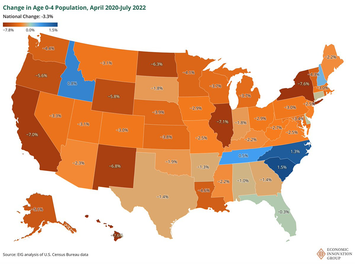
I try hard to give people insights into trends affecting our world. One of them is the way that declining birth rates will ultimately translate into shrinking cities.
In the future, many if not most of us will be living in places whose population is shrinking. This will have profound consequences - fiscally, economically, in terms of services, and for anyone running a business, church, ministry or other organization in these places.
Shrinking cities have long been a phenomenon of the Rust Belt, as well as analogous regions around the globe. As suburbanization and then deindustrialization hit, cities like Cleveland, Youngstown, Pittsburgh, St. Louis, South Bend, and a host of others lost a huge share of their population. Even some metropolitan areas lost population on a regional basis.
The response of most people who don’t live in these places has been “too bad, so sad.” Shrinkage was seen as a phenomenon that affected a relative handful of unlucky places but was pretty much irrelevant to everybody else. The 2016 election caused people to pay more attention, but shrinkage has still been viewed as a contained phenomenon.
Alan Mallach argues that far from being an anomaly, shrinkage is likely to become the norm, in the US and abroad - even in China, saying, “By 2050, shrinking cities will have become the dominant urban form in China.”
Mallach is an urban planner who has studied shrinking cities in the Rust Belt for years. So he’s very aware of all the issues in these places. He’s one of the most knowledgeable, thoughtful people on the subject and one of the few who is willing to venture independent thought. He has a new book out called Smaller Cities in a Shrinking World: Learning to Thrive Without Growth.
In the book he notes that US population growth has slowed significantly in recent years. The birth rate is far below replacement, which is starting to show up in population figures. I just took a look at the data, and almost 75% of counties in the country had more deaths than births last year. Traditionally, births outnumbered deaths, so much so that the births minus deaths figure was called “natural increase” by demographers. Natural decrease was rare - but now it’s the norm. In fact, the Census Bureau actually renamed the field in its data release this year, calling it “natural change.” And a think tank called the Economic Innovation Group created this map, showing that almost the entire country is seeing declining numbers of pre-school aged children.
Read the rest of this piece on Aaron Renn Substack.
Aaron M. Renn is an opinion-leading urban analyst, consultant, speaker and writer on a mission to help America's cities and people thrive and find real success in the 21st century. He focuses on urban, economic development and infrastructure policy in the greater American Midwest. He also regularly contributes to and is cited by national and global media outlets, and his work has appeared in many publications, including the The Guardian, The New York Times and The Washington Post.
Photo: courtesy Aaron Renn Substack.












